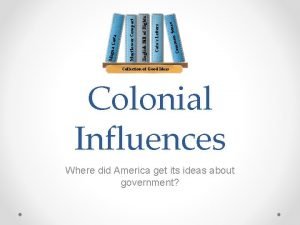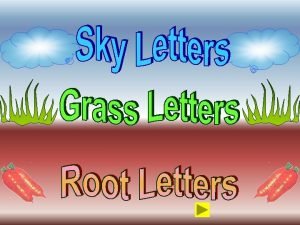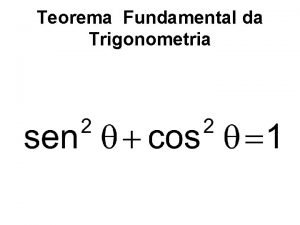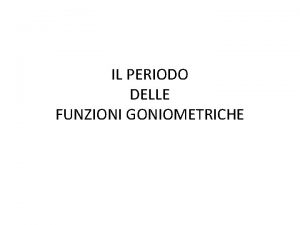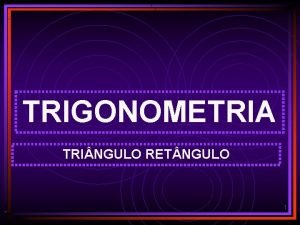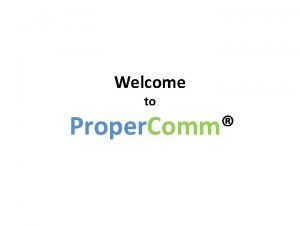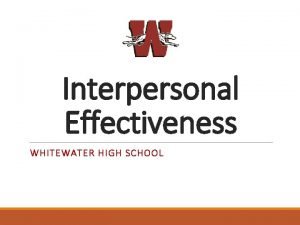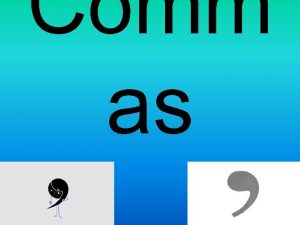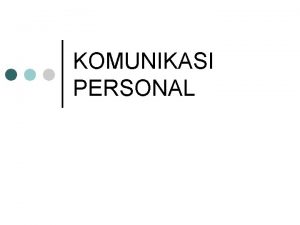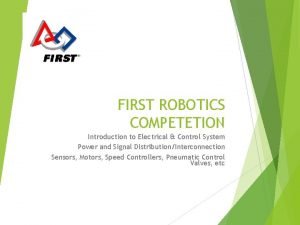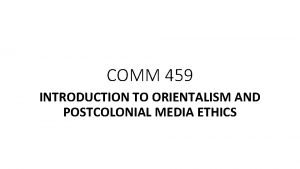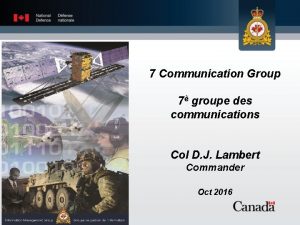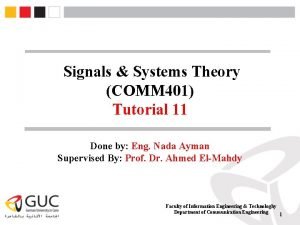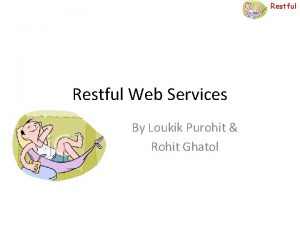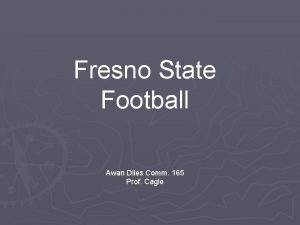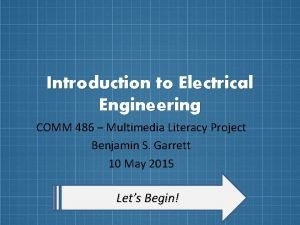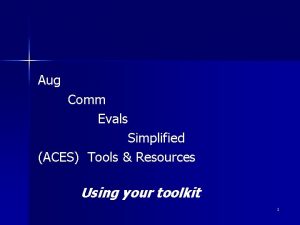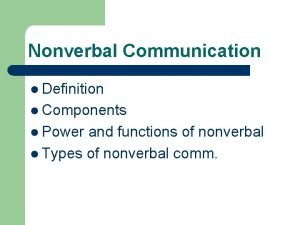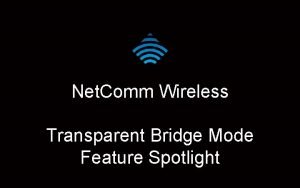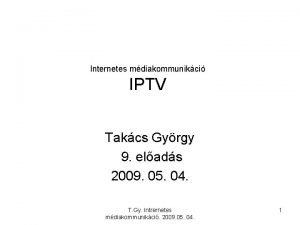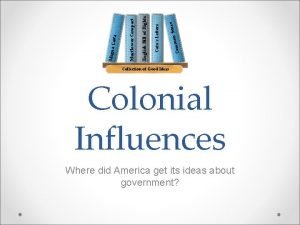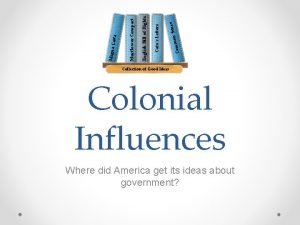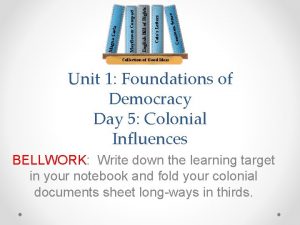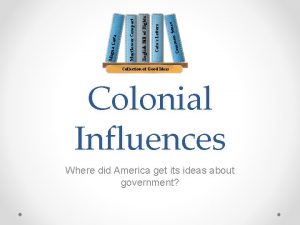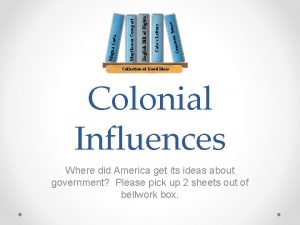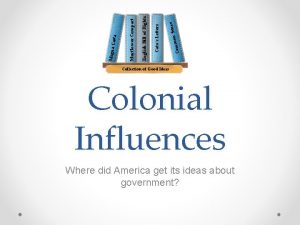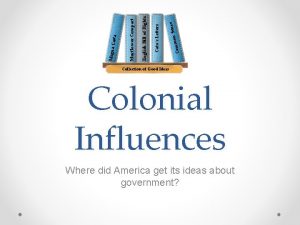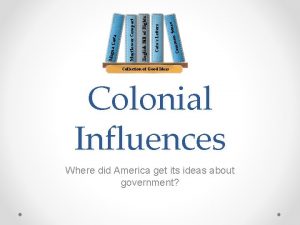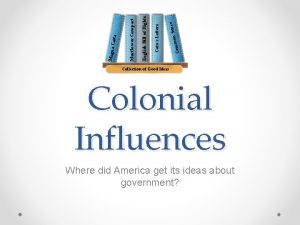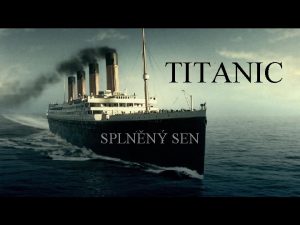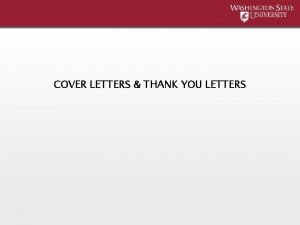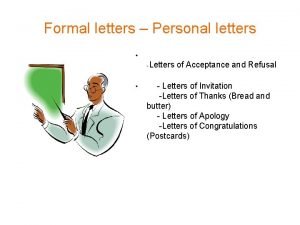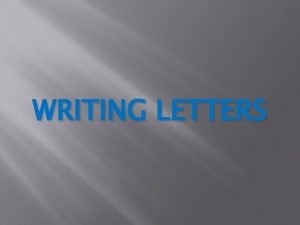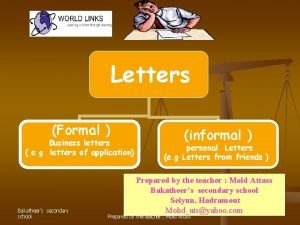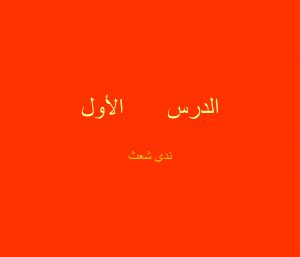se n Sen o Comm Catos Letters English























- Slides: 23

se n Sen o Comm Cato’s Letters English Bill of Rights Mayflower Compact Carta Magna Collection of Good Ideas Colonial Influences Where did America get its ideas about government?

What’s the big idea? • Rule of Law o All people must follow the laws, and the laws should be enforced fairly. • Self Government o People can make decisions on how their government should work. • Due Process o People have the right to fair and reasonable laws. Officials have to follow rules when enforcing laws and need to treat all people in the same way. • Limited Government o A government that has been limited in power by a constitution, or written agreement. • Rights o A set of things that people believe they should be free to do without restrictions.

Ideas? Our Founding Fathers did not invent the American system of government out of thin air. They, like the other colonists, were influenced by many different ideas and traditions. The biggest influence came from their British heritage. (Remember the colonists WERE British until the American Revolution!) Events in British history and things that were happening during their own time affected the way the Founders thought government should work. The Founders didn’t have the Internet, so they got their ideas from books and other printed materials. What would have been on the minds of American colonists on the verge of a revolution? Let’s take a peek at what might have been on the shelf of a private colonial library …

King v. Nobles: Round One Way back in the Middle Ages, England was ruled by a king who shared some of his powers with the wealthy nobility. The nobility would carry out the king’s wishes, and the king would allow the nobles to make some local decisions. But in the early 1200 s, King John tried to take all the power for himself! The angry nobles fought back. . .

King v. Nobles: Round One In 1215, they created a document called the Magna Carta that limited the power of the king and protected certain rights for the nobles. The nobility was powerful enough to force King John to sign the Magna Carta. This was a big deal because it introduced the concepts of limited government, rule of law, and due process. It also helped create the nation’s Parliament (kind of like Congress in the U. S. ).

Magna Carta The Magna Carta was a government document that limited the power of the king of England protected the rights of the nobility. It was written by the English nobility in 1215. Big Ideas: • Limited Government • Rights • Rule of Law • Due Process

I Think We Took a Wrong Turn! Fast forward over 400 years. The next document in the colonial library is the Mayflower Compact. It was written to solve a basic problem: Who is in charge? The Pilgrims left England in a ship called the Mayflower headed for the Virginia colony in 1620. A strong storm blew the ship off course, and they ended up in what is now Massachusetts.

I Think We Took a Wrong Turn! This area was not under the control of the company that sent them, so the Pilgrims were in independent territory. They needed a Government- fast! The men agreed to create a new government and to follow its rules. In exchange, they would all protect each other. This is called self-government.

Mayflower Compact Magna Carta The Mayflower Compact was an agreement among individuals that created a government that would provide order and protect the rights of the colonists. It was written by a group of English Pilgrims as they traveled to Massachusetts in 1620. Big Ideas: • Self Government • Rule of Law

King v. Nobles: Round Two Meanwhile, back in England, the Parliament had been battling it out with the king in a series of civil wars. Parliament eventually came out on top and passed the English Bill of Rights in 1689. Like the Magna Carta, this document expanded the rights of the Parliament and the people, while limiting the powers of the king even more. This document was well-known because it affected people living in Britain and the new British colonies in America.

English Bill of Rights Mayflower Compact Magna Carta The English Bill of Rights was a government document that expanded the powers of the English Parliament and expanded the rights of the people, as well as further limited the rights of the king. It was written by the members of the English Parliament in 1689. Big Ideas: • Limited Government • Rights • Due Process • Rule of Law

Hot off the Press! In the 1720 s, authors using the fake names Cato the Elder and Cato the Younger published a series of newspaper editorials in Britain. The authors argued against the king’s heavy-handed rule. These articles were titled Cato’s Letters, and they were also published in colonial American newspapers. Cato’s Letters became so popular that they were collected into a book. Half of the private libraries in colonial America owned a copy! Cato’s Letters discussed many different ideas, such as freedom of expression, which became very influential in the colonies.

Cato’s Letters English Bill of Rights Mayflower Compact Magna Carta Cato’s Letters were made up of a collection of newspaper articles published to convince people to support the freedom of expression and to fight against the heavy handed rule of the British government. They were written by two anonymous English journalists in the 1720’s. Big Ideas: • Rights • Rule of Law

Calling For Independence By the 1700 s, King George III and Parliament were making more and more demands on the colonies. Many were getting fed up and began to meet and discuss breaking away from Britain. In the mid-1770 s, representatives from most of the 13 colonies met in Philadelphia. Here, the Founders discussed the options for the future.

Calling For Independence While these meetings were happening, a journalist named Thomas Paine published a pamphlet called Common Sense in 1776. In Common Sense, Paine did not introduce any new ideas. Instead, he explained the arguments for independence in a way that was easy for everyday colonists to understand. He encouraged them to support the fight for independence from Britain. Just six months later, the Declaration of Independence was signed.

Common Sense Cato’s Letters English Bill of Rights Mayflower Compact Magna Carta Common Sense was a pamphlet written to convince the American colonists to support becoming independent from England. It was written by a colonial journalist and circulated in 1776. Big Ideas: • Self Government • Rights

From Big Ideas to the Constitution The movers and shakers in the colonial period spent a lot of time thinking about these big ideas, and how to put them into practice. Give it a try yourself by matching each aspect of the U. S. Constitution to the big ideas that you just learned about.

From Big Ideas to the Constitution A “This Constitution and the laws of the United States. . . shall be the supreme law of the land. ” All government officials “shall be bound by an oath to support this constitution. ” U. S. Constitution, Article VI Self– Government: popular or representative system where the people create and run their own government Rule of Law: the idea that all people must follow the laws, and that the laws are enforced fairly Due Process: People have the right to fair and reasonable laws. Officials have to follow rules when enforcing the laws and treat all people in the same way. Rights: A set of things that people believe they should be free to do without restrictions A Limited Government: the power of government is limited by the Constitution, and each branch is limited in what it can do

B From Big Ideas to the Constitution The first ten amendments in the Bill of Rights guarantee certain rights and freedoms that include: • Freedom of speech, the press, and religion • Right to petition the government and to bear arms • Prohibition of excessive bail or fines, or cruel and unusual punishments for crimes Self– Government: popular or representative system where the people create and run their own government Rule of Law: the idea that all people must follow the laws, and that the laws are enforced fairly Due Process: People have the right to fair and reasonable laws. Officials have to follow rules when enforcing the laws and treat all people in the same way. Rights: A set of things that people believe they should be free to do without restrictions B Limited Government: the power of government is limited by the Constitution, and each branch is limited in what it can do

C From Big Ideas to the Constitution The U. S. Constitution created three branches of government. Each branch is given the power to check, or limit the power of the other two. The system of checks and balances keeps any one branch from getting too powerful. Self– Government: popular or representative system where the people create and run their own government Rule of Law: the idea that all people must follow the laws, and that the laws are enforced fairly Due Process: People have the right to fair and reasonable laws. Officials have to follow rules when enforcing the laws and treat all people in the same way. Rights: A set of things that people believe they should be free to do without restrictions Limited Government: the power of government is limited by the Constitution, and each branch is limited in what it can do C

D From Big Ideas to the Constitution “ No person shall. . . be deprived of life, liberty, or property, without due process of law” U. S. Constitution, 5 th Amendment Self– Government: popular or representative system where the people create and run their own government Rule of Law: the idea that all people must follow the laws, and that the laws are enforced fairly Due Process: People have the right to fair and reasonable laws. Officials have to follow rules when enforcing the laws and treat all people in the same way. Rights: A set of things that people believe they should be free to do without restrictions D Limited Government: the power of government is limited by the Constitution, and each branch is limited in what it can do

E From Big Ideas to the Constitution “WE THE PEOPLE of the United States. . . do ordain and establish this Constitution for the United States of America. ” Preamble to the Constitution, 1787 Self– Government: popular or representative system where the people create and run their own government E Rule of Law: the idea that all people must follow the laws, and that the laws are enforced fairly Due Process: People have the right to fair and reasonable laws. Officials have to follow rules when enforcing the laws and treat all people in the same way. Rights: A set of things that people believe they should be free to do without restrictions Limited Government: the power of government is limited by the Constitution, and each branch is limited in what it can do

So what are you going to do? Choose a modern method of communication (text stream, Facebook, Twitter, etc. ) and show a conversation/ stream with two of the inspiration documents debating who’s more important to the Constitution!
 Big ideas of cato's letters
Big ideas of cato's letters Root grass and sky letters
Root grass and sky letters Sen
Sen Dal grafico alla funzione goniometrica
Dal grafico alla funzione goniometrica Sen (a-b)
Sen (a-b) Bayram özünü bildi bileni anda buldu
Bayram özünü bildi bileni anda buldu Proper comm
Proper comm Joinmyquiz.comm
Joinmyquiz.comm When to use a comm
When to use a comm Intrapersonal comm
Intrapersonal comm Intrapersonal comm
Intrapersonal comm Roborio comm light red
Roborio comm light red Comm 459
Comm 459 76 comm regt
76 comm regt Comm 401
Comm 401 Mobilecricinfo
Mobilecricinfo Awan diles
Awan diles Netbenefits.comm
Netbenefits.comm Comm 486
Comm 486 Aug comm device
Aug comm device Wwwmenti
Wwwmenti Nonverball
Nonverball Net comm wireless
Net comm wireless Beeg comm
Beeg comm
